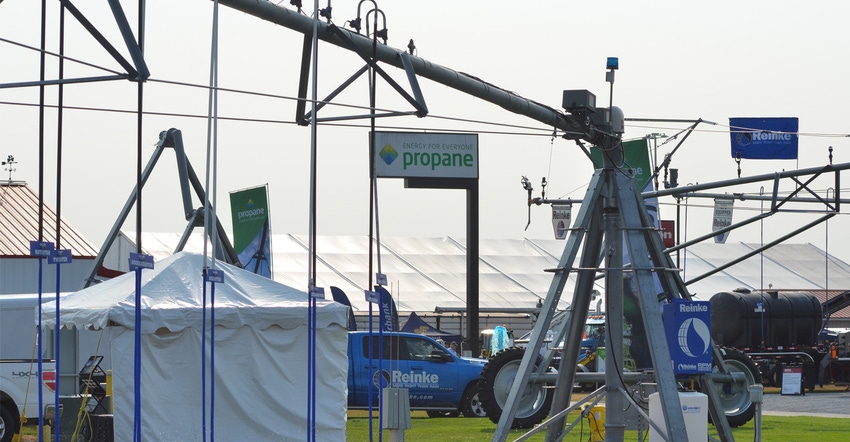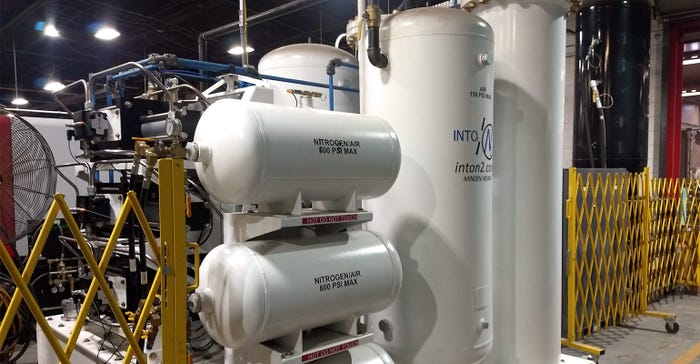
Supply chain disruption is a common concern for farmers these days. But farm suppliers, such as center-pivot irrigation manufacturer Reinke, also worry about these frontline issues because of what it means to their farmer customers.
That’s one of the main reasons Reinke recently made a $2.5 million investment into a fiber-optic laser production system that gives the company the ability to manufacture many of its own parts in-house, shortening delivery time to growers, and allowing the manufacturing team to improve the precision production of its own parts.
Farm Progress visited the Reinke Manufacturing Co. plant in Deshler, Neb., this past summer. Reinke president Chris Roth gave a tour and a demonstration of the new production system — a GX-F Advanced 10,000-watt laser from Machinery System. It is equipped with artificial intelligence and gas-reduction technology, offering two-dimensional fiber lasers with superior beam-quality consistency.
Getting parts to customers
“What this allows us to do is to get the most parts cut from one piece of steel,” Roth says. “If we need a certain part or a certain piece, but we only need 10 of them for instance, we can make 10 out of one piece of steel,” cutting down on any waste and time.
The laser system can go to another thickness of steel to make a different part in a matter of minutes, offering more flexibility to get parts out to customers quickly. The company ships parts to growers in more than 40 countries.
Two Reinke employees are specially trained and charged with operation of the precision production equipment. “The operation is capable of running 24/7 with monitored automation,” Roth says. “We have days where it runs nonstop and other days where we run with some downtime. Overall, as we expand on the number of components that are to be cut, we will see an increase in operational time.”

NEW TECH: Chris Roth, president at Reinke, stands in front of the new laser production unit installed at the plant near Deshler, Neb.
There were several layers of training provided by Mitsubishi to get the new system up and running. Basic training covered how to start the system, change nozzles, center the optics, change consumables and load programs into the system. The “Nesting” program training is what calculates and determines the best layout for how components are cut out of plate stock.
“This laser operation has an automated tower, stock loading and unloading system,” Roth explains. “The automation pulls plate stock from the tower, and then automatically loads individual plates into the laser-cutting operation.
“After the laser completes the cutting cycle, the laser cut plate stock is automatically transported out of the laser and placed on a transfer table that is shuttled to an unloading station where a production worker can unload and sort the laser-cut components.”
So, the system required automation training, followed by advanced applications training that took place after the machine had been in operation for several months. This allowed programmers and operators to answer questions, and then modify and create more advanced commands.
Focus on sustainability
The results of the new system have been an increase in consistency, quality and reliability of Reinke parts, Roth says. Besides cutting lead time in production and manufacturing their own reliable parts that are extremely precise, he says that, ultimately, the greatest benefit to customers is that it allows the company to better control response times.
“The consistency in the production processes and components results in fewer issues in product quality and serviceability, which is seen as an increase in customer satisfaction,” he adds.
The irony of this new technology is that the laser equipment was installed at the plant within a few feet of where company founder Richard Reinke built his #1 Electrogator center pivot in the shop in 1960.
Richard, who died in 2003, always wanted to make things easier and more convenient for farmers, Roth says, and that the reasoning behind the new precision production equipment is exactly the same.

SUSTAINABLE APPROACH: An additional step was taken when the new laser production unit was installed. Reinke added its own nitrogen regeneration system to gather naturally occurring nitrogen out of the air, instead of having nitrogen shipped in to assist with the laser-cutting process and potentially dealing with supply chain and distribution issues from that as well.
In a move to improve sustainability at the plant, the company took an additional step of installing its own nitrogen regeneration system to gather naturally occurring nitrogen out of the air to use in the laser-cutting process, removing the concerns about dealing with supply chain and distribution issues, and capturing natural nitrogen for the manufacturing processes.
“We are still learning and growing with the technology,” Roth says. “We are constantly evaluating and testing different parts to run on the laser operation. Our design engineers are exploring new ‘geometric shapes’ that would not have been considered before. The laser has a tremendous upside and is only limited by how far out of the box we look.”
Learn more by visiting reinke.com.
About the Author(s)
You May Also Like






